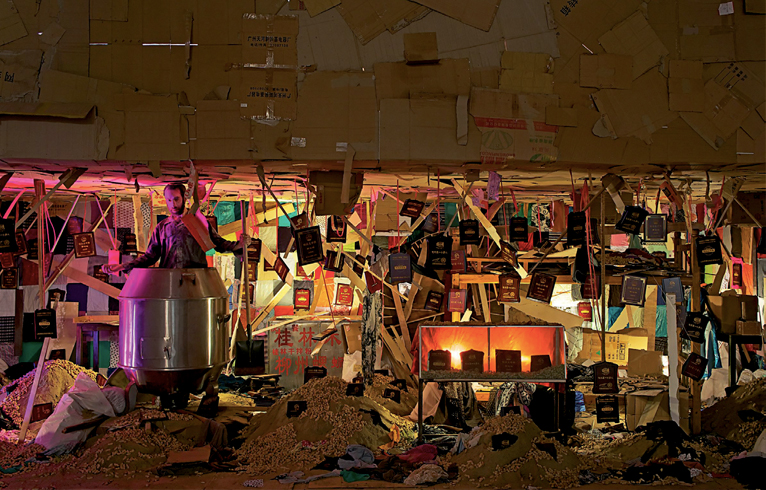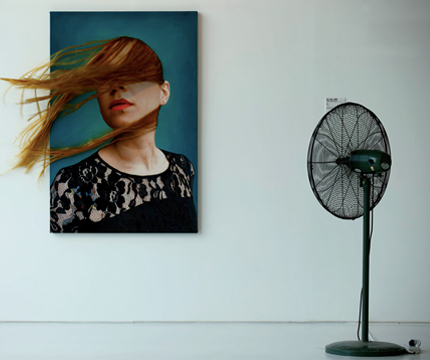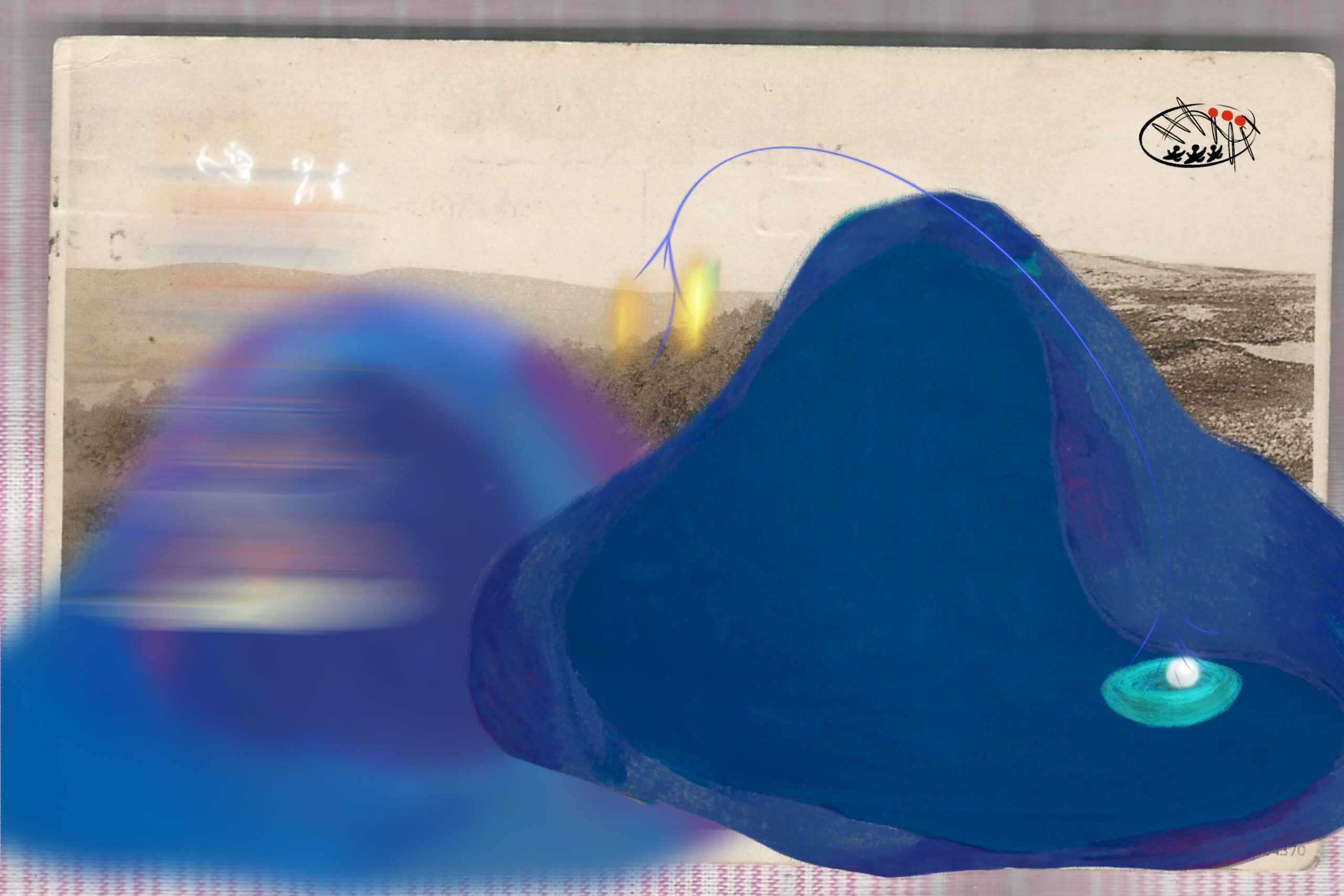SHIFT: IN CHINA, MADE IN AMERICA
| December 14, 2011 | Post In LEAP 11

SIX YEARS AFTER the completion of its building, Guangdong’s Times Museum welcomed its first self-planned exhibition “SHIFT: Exhibition on young American artists creating on-site artwork in China.” (Cumbersome English title theirs.) The gallery space is situated on the top floor of a residential building that Rem Koolhaas designed for Times Real Estate. To get to the gallery, one must first travel through the rapidly multiplying construction sites outside Guangzhou city proper and through the compound itself, where the newest members of urban society make their living. Hinting at this geographical conflict, curator Shen Ruijun has made “place” the central concept of the exhibition, positing Guangzhou, the distribution center of all things “Made in China,” as a place of artistic creation. The creators here are five young artists from New York: Meghan Gordon, Shana Moulton, Roxana Pérez-Méndez, Adam Parker Smith and Bryan Zanisnik. Fittingly, these artists have long patronized New York City’s dollar stores for their materials, the majority of which are made in China.
The exhibition was designed a bit like a reality TV show: within a two week period, the artists, all newcomers to China and with limited funding in hand, were to familiarize themselves with the local environment and, sourcing materials from Guangzhou’s numerous wholesale goods markets, complete and install their artwork. On top of this, the curator simultaneouly organized discussions and seminars: over the course of five evenings, each American artist was invited to discuss a given topic with a young Chinese artist (Chen Xiaoyun, Liang Shuo, Shi Qing, Zhang Ding, Zhou Tao). The day after the opening, a larger seminar on “the value of experience” awaited them. American and Chinese artists and critics sat down to discuss the creative experience of the project and the questions to which it gave rise.
Obviously this is not just an emphasis on “on-site creation.” The reality of the globalized economy, China’s export-oriented processing industries, and Guangzhou’s role as a wholesale distribution center, served as the backdrop for this exhibition. The American artists’ first-hand experience not only provides a realistic reflection of China, it also enables them to reflect on their work and come to grasp a number of different realities, all the way down to the specifics of materials used.
I would like to emphasize that, from strategy and design to production and realization, “SHIFT” exposes components of exhibition-making normally concealed by the curtain of opening night and transforms them into a product of the exhibition that, together with exhibition structure and exhibited works, form the exhibition’s overall content.
1. ADAM PARKER SMITH
Through a number of different works made in a mischievous pop-art style, the artist attempted to describe visual paradoxes relating to power, beauty, hostility, and the phenomenon of the political culture of consumerism. One of the most interesting pieces is a wall of window shutters, into which various daily household goods were inserted.

2. SHANA MOULTON
The theme of this installation is female psychological damage and self-treatment. The artist purchased various apparatuses for massage and physical therapy, as well as other such equipment (in surprisingly bright colors) at small goods markets, arranged these on shelves, and created an accompanying multi-channel video installation introducing these “balanced body and mind” Eastern treatment methods. During the opening ceremony, the artist carried out a simple performance, demonstrating how to use some of the devices.
3. ROXANA PÉREZ-MÉNDEZ
Using artificial flowers, lamps and materials bought from electronics markets, the artist created a large-scale installation in the form of a large floating landscape. The work’s name, Soñar Sin Dormir (Spanish for “to dream without sleeping”), describes in poetic language the artist’s impressions of the activity on the streets in Guangzhou. Even more alluring is a light installation placed in Times Museum’s large-scale glass house, which faces the desert landscape of Guangzhou’s outskirts and its endless residential buildings: a line of thought-provoking poetry in LED lights, reading “Me Fui A Caballo” (Spanish for “I left on horseback”).
4. BRYAN ZANISNIK
The artist created an installation with wholesale electronic and daily-use goods collected from Guangzhou markets. Together with cardboard, wood, carpet and floor-base, the resulting space is a combination of the home environment and a museum’s rare collections room. During the opening, a performance was held within the installation.
5. MEGHAN GORDON
Using a fictional character named Edith Winston, an amateur museum guide, the artist created a fictional museum tour, first constructing with materials from wholesale markets a “China room”— as often seen in Western museums— filled with dubiously-styled new furniture and objects. This Great China of the Western imagination included an audio guide, complete with several handheld devices that visitors could listen to and learn in detail about this fictional “China room.” Ultimately, the work is a meditation on fraught Sino-American cultural relations and on cultural misunderstanding.


